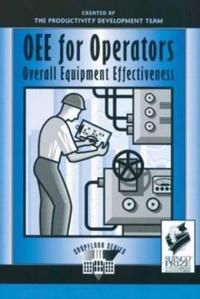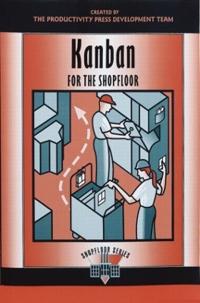OEE for Operators (Häftad)
avProductivity Dev Team, Productivity Press Development Team, Productivity Development Team
ISBN: 9781563272219 - UTGIVEN: 199908Overall Equipment Effectiveness (OEE) is a crucial measure in TPM that reports on how well equipment is running. It factors three elements ---the time the machine is actually running, the quantity of products the machine is turning out, and the quantity of good output - into a single combined score.[...]
Kanban for the Shopfloor (Häftad)
avProductivity Press Development Team, Productivity Press Development Team
ISBN: 9781563272691 - UTGIVEN: 200202Kanban is the name given to the inventory control card used in a pull system. The primary benefit of kanban is to reduce overproduction, the worst of the seven deadly wastes. A true kanban system produces exactly what is ordered, when it is ordered, and in the quantities ordered. It is essentially a[...]
Standard Work For The Shopfloor (Pocket)
avProductivity Press Development Team, Productivity
ISBN: 9781563272738 - UTGIVEN: 2002-07-10Standard work is a set of work procedures that effectively combine people, materials, and machines to maintain quality, efficiency, and safety. This text discusses the characteristics of standards, key benefits and applications of standardization, documentation, and other topics.[...]
Just-in-time For Operators (Pocket)
avProd Press, Productivity Press Development Team
ISBN: 9781563271335 - UTGIVEN: 1998-02-27Just-in Time for Operators presents concepts and tools. The book includes illustrations and examples to explain basic JIT concepts and some of the changes people may encounter in a JIT implementation.[...]
Mistake-proofing For Operators (Pocket)
avShingo, Productivity Press Development Team
ISBN: 9781563271274 - UTGIVEN: 1997-01-01Since it is human nature to make mistakes, the Zero Quality Control System (ZQC) does not blame people for errors, but instead keeps errors from becoming defects by monitoring processing conditions at the source. In this breakthrough approach, mistake-proofing devices called poka-yoke are used to ch[...]
Kaizen For The Shopfloor (Pocket)
avProductivity Press Development Team
ISBN: 9781563272721 - UTGIVEN: 2002-02-01Tpm For Supervisors (Pocket)
avProductivity Development Team, Shirose, Productivity Press
ISBN: 9781563271618 - UTGIVEN: 1996-10-15A brief but complete introduction to TPM offering an easy-to-follow overview of the basic TPM features and implementation.[...]
Cellular Manufacturing (Pocket)
avProductivity Development Team Productiv, Productivity Press
ISBN: 9781563272134 - UTGIVEN: 1999-03-05Cellular Manufacturing: "One-Piece Flow for Workteams "introduces production teams to basic cellular manufacturing and teamwork concepts and orients them for participating in the design of a new production cell. Use this book to get everyone on board to reduce lead time, work-in-process inventory, a[...]










